Author: Marshall Schott
Named for the town in which it was originally cultivated, Tettnanger is one of the four German noble hop varieties along with Saaz, Hallertau, and Spalt. Sharing some of the earthy characteristics found in classic English varieties such as Fuggles, Tettnanger is also known to impart a subtle spiciness along with balanced floral and herbal notes that work beautifully in lager styles.
Alpha: 3 – 6%
Beta: 3 – 5.5%
Cohumulone: 24% of alpha acids
Total Oil: 0.4 – 1.1 mL/100g
Myrcene: 20 – 35%
Humulene: 20 – 30%
Caryophyllene: 6 – 11%
Farnesene: 16 – 30%
Linalool: 0.4 – 0.9%
ß-Pinene: 0.3 – 0.5%
Parentage: German landrace variety
My first few experiences brewing with Tettnanger hops were with more malt or yeast forward ales, styles that arguably hid her more delicate characteristics. It wasn’t until I made a clean Kölsch a few years back with Tettnanger being the sole hop that I realized my love of this noble variety and began featuring it in the majority of the lagers I brewed. Curious how blind tasters would describe a beer hopped with only Tettnanger, I was duly excited to put it through The Hop Chronicles!
| MAKING THE BEER |
Given the noble nature of Tettnanger and its common use in lager styles, I decided to adapt our standard THC recipe to better fit the hop.
Tettnanger Lager
Recipe Details
| Batch Size | Boil Time | IBU | SRM | Est. OG | Est. FG | ABV |
|---|---|---|---|---|---|---|
| 5.2 gal | 60 min | 31.5 IBUs | 5.1 SRM | 1.048 | 1.013 | 4.6 % |
| Actuals | 1.048 | 1.01 | 5.0 % | |||
Fermentables
| Name | Amount | % |
|---|---|---|
| Lamonta American-style Pale Malt (Mecca Grade) | 8.5 lbs | 89.47 |
| Vanora Vienna-style Malt (Mecca Grade) | 1 lbs | 10.53 |
Hops
| Name | Amount | Time | Use | Form | Alpha % |
|---|---|---|---|---|---|
| Tettnang (2017) | 28 g | 60 min | First Wort | Pellet | 4.4 |
| Tettnang (2017) | 28 g | 20 min | Boil | Pellet | 4.4 |
| Tettnang (2017) | 28 g | 5 min | Boil | Pellet | 4.4 |
Yeast
| Name | Lab | Attenuation | Temperature |
|---|---|---|---|
| Harvest (L17) | Imperial Yeast | 72% | 50°F - 60°F |
Notes
| Water Profile: Ca 92 | Mg 1 | Na 10 | SO4 153 | Cl 50 |
Download
| Download this recipe's BeerXML file |
This was an exciting brew day, as it marked my first batch on the new electric system. I started by collecting the full volume of water and adjusting it to my desired profile.
While the water was slowly being filtered, I weighed out and milled the grains.
Once the appropriate volume of water was collected, I turned on the element to begin heating it up.
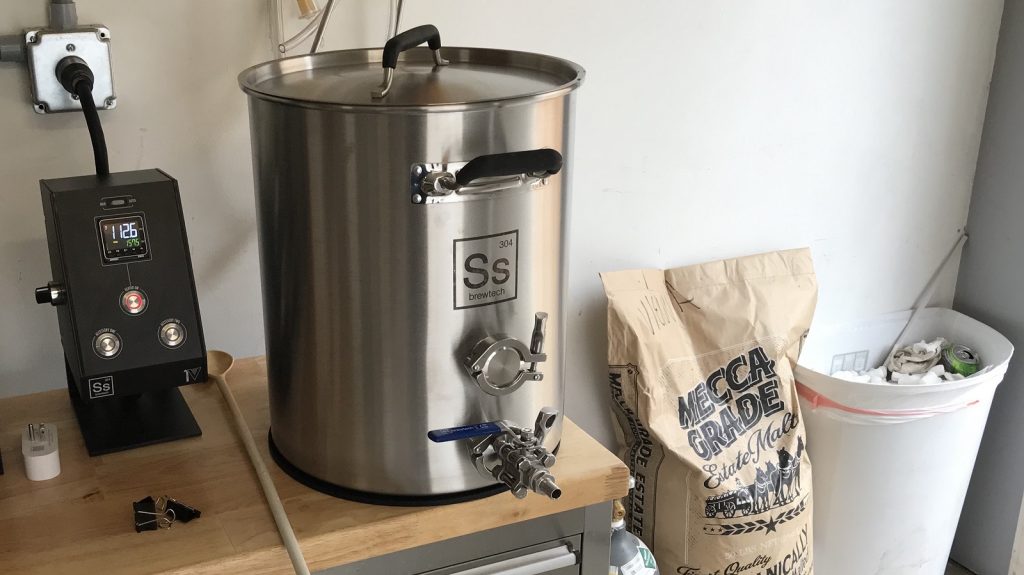
When strike temperature was reached, I dropped the grain filled fabric filter into the water and stirred to ensure no dough balls.
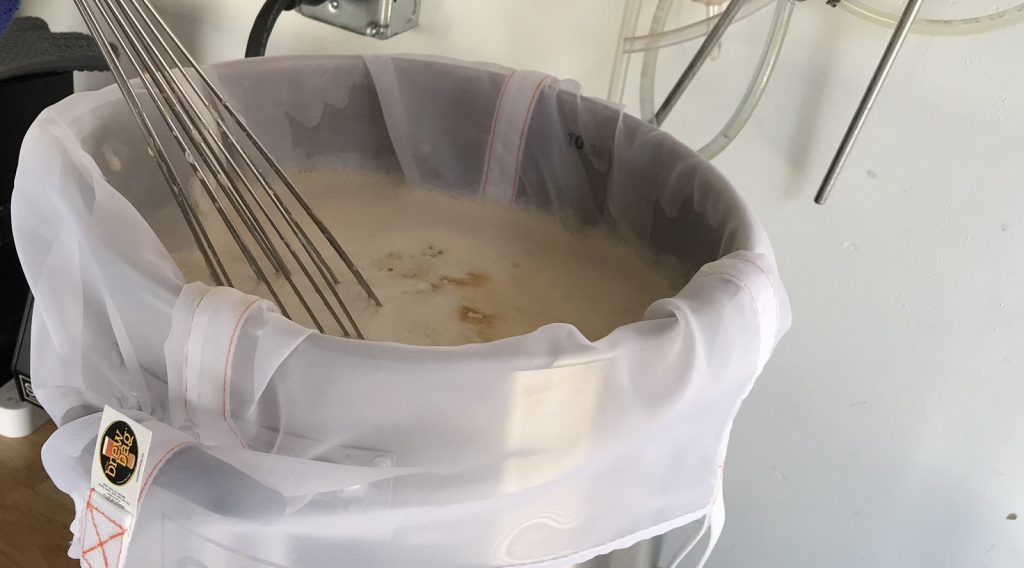
A temperature checked revealed the mash was right about where I wanted it to be.
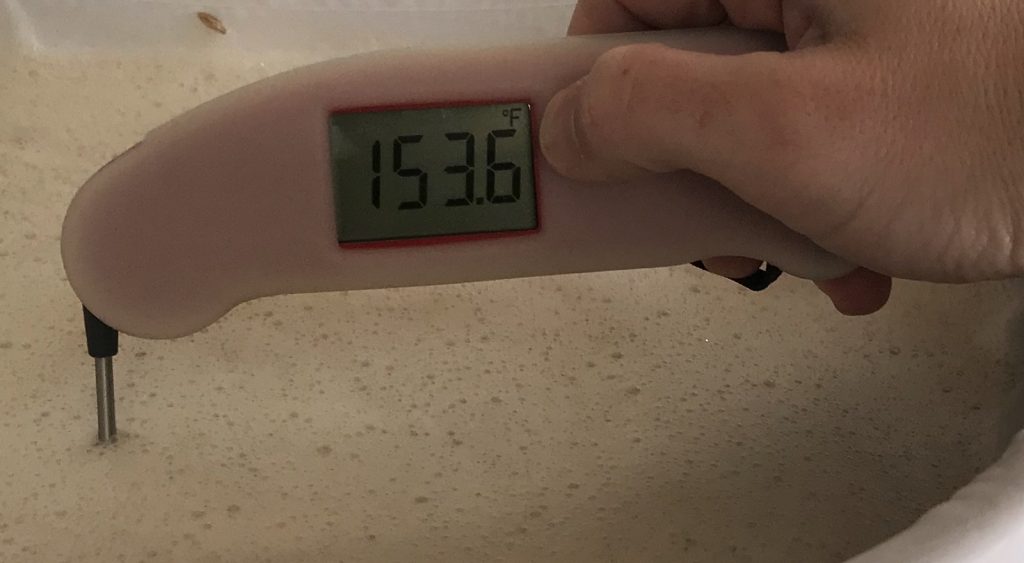
After setting the controller to maintain the mash temperature, I proceeded to weigh out the kettle hop additions.
At the end of the 60 minute mash, the grain bag was removed and allowed to drip until the expected pre-boil volume was reached, after which the wort was brought to a vigorous boil.
The wort was boiled 60 minutes with hops added at the times stated in the recipe before being quickly chilled.
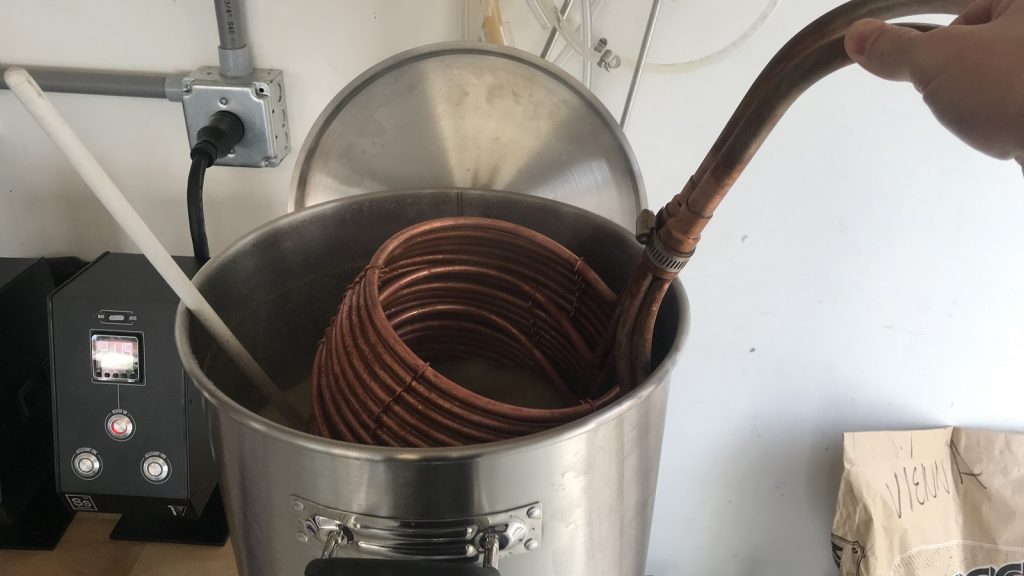
A refractometer reading showed the OG was right where it was expected to be.
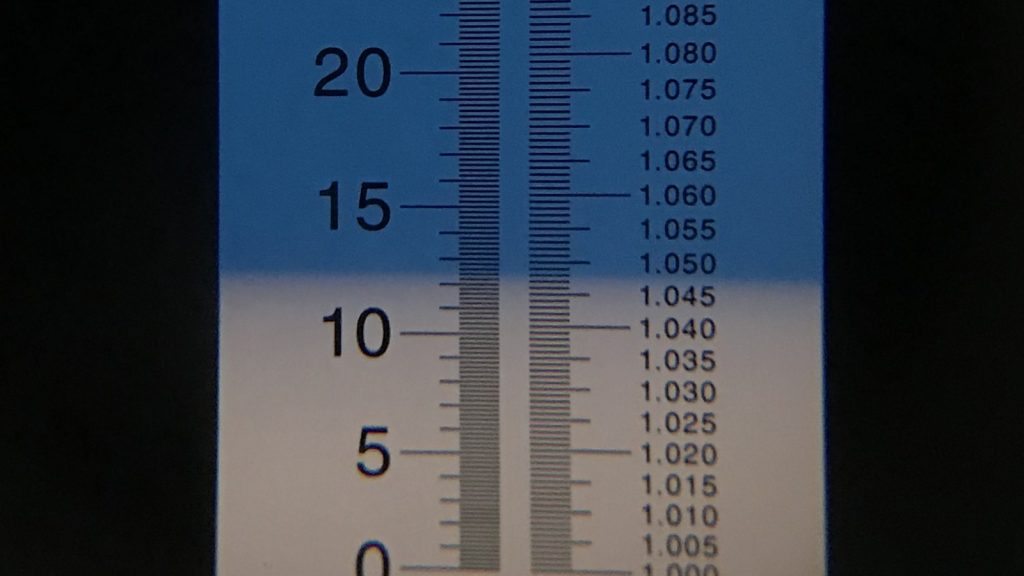
I then racked the wort to a sanitized Brew Bucket.
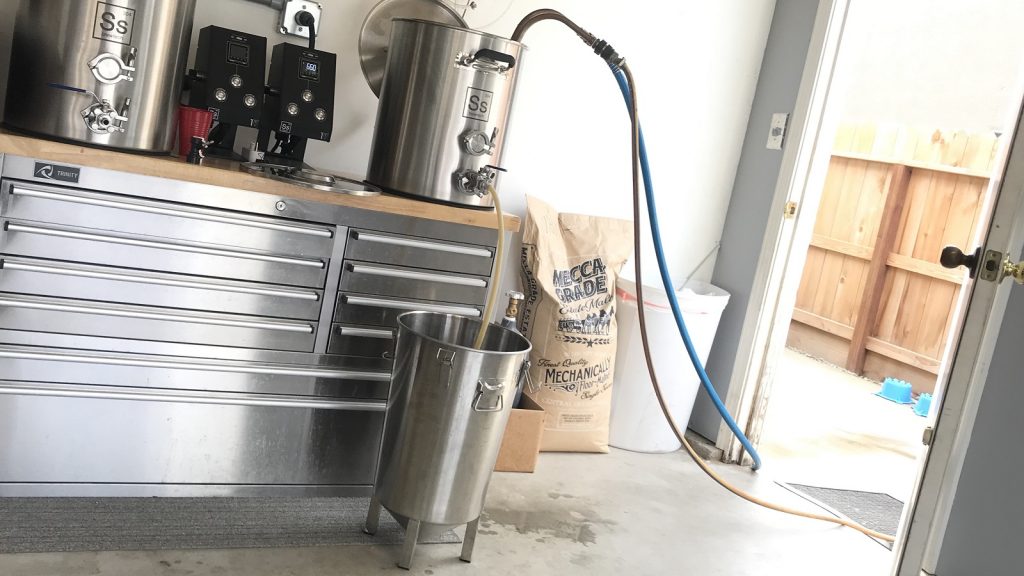
Given my cool groundwater this time of year, I was able to chill the wort to 64°F/18°C and immediately pitched a pouch of Imperial Yeast L17 Harvest.
The cool winter months mean my garage maintains an ambient temperature range of 58°F/14°C to 65°F/18°C, ideal for when my fermentation chamber is full of xBmt beers.
I observed airlock activity 6 hours after pitching the yeast and fermentation chugged along uneventfully. With signs of activity absent a week post-pitch, I took an initial hydrometer measurement that matched a second measurement taken 5 days later, indicating FG had been reached.
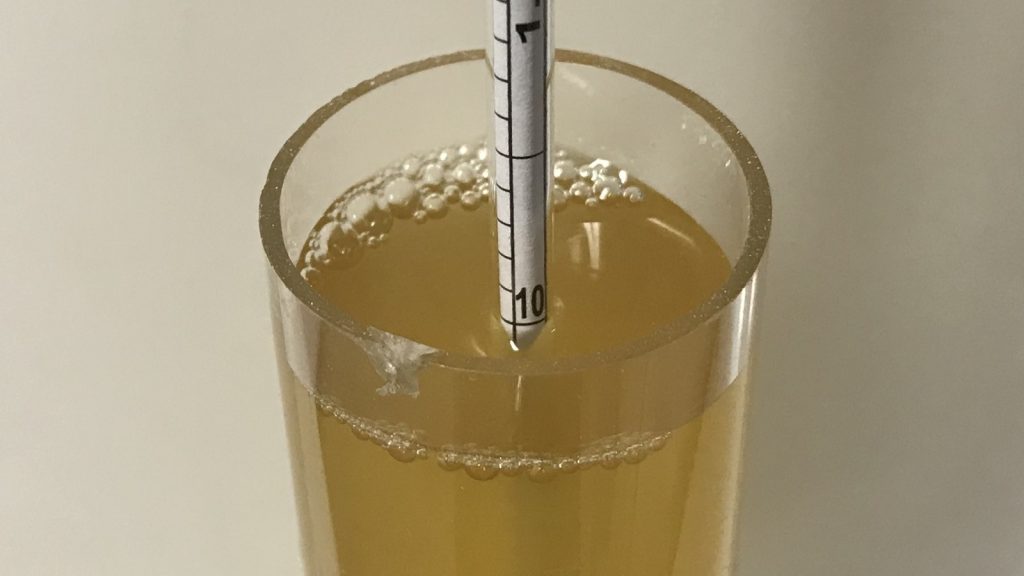
The beer was racked to a sanitized and CO2 purged keg.
The filled keg was placed in my keezer and burst carbonated overnight before the gas was reduced to serving pressure. After 5 days of cold conditioning, the beer was carbonated and ready to serve.
| METHOD |
Participants were instructed to focus only on the aromatic qualities of the beer before evaluating the flavor. For each aroma and flavor descriptor, tasters were asked to write-in the perceived strength of that particular characteristic on a 0-9 scale where a rating of 0 meant they did not perceive the character at all and a 9 rating meant the character was extremely strong. Once the data was collected, the average rating of each aroma and flavor descriptor was compiled and analyzed.
| RESULTS |
A total of 15 people participated in the evaluation of this beer, all blind to the hop variety used. The average aroma and flavor ratings for each descriptor were plotted on a radar graph.
Average Ratings of Aroma and Flavor Perceptions
The 3 characteristics endorsed as being most prominent by participants:
| Aroma | Flavor |
| Apple/Pear | Floral |
| Tropical Fruit | Apple/Pear + Melon (tie) |
| Citrus | Tropical Fruit + Stone Fruit + Citrus (tie) |
The 3 characteristics endorsed as being least prominent by participants:
| Aroma | Flavor |
| Onion/Garlic | Onion/Garlic |
| Dank/Catty | Dank/Catty |
| Resinous | Berry |
When asked to rate the pungency/strength of the hop, most tasters perceived it as being mildly to moderately pungent.
Tasters were then instructed to identify beer styles they thought the hop would work well in.
Finally, participants were asked to rate how much they enjoyed the hop character on a 1 to 10 scale.
My Impressions: I went into this a huge fan of Tettnanger and felt completely validated by my personal experience with this single hop beer. To me, it had everything I expect from a beer moderately hopped with this variety, the most prominent characteristics being floral and herbal with a hint of noble spiciness in the background. This all worked in concert with the malt and yeast to produce a pleasantly well rounded beer. Yum, yum, yum!
| CONCLUSION |
As a classic hop that’s been around seemingly forever and lacks the fruity oomph of modern American varieties, it’s easy to see how brewers might overlook Tettnanger when crafting their recipes. But there’s a reason it has such a rich history in German brewing and is still around today– it’s simply fantastic! Combining floral and earthy characteristics with subtle fruity notes, Tettnanger works as well on its own in delicately flavored lagers as it does in conjunction with other varieties in more robust styles.
As is the case with many classic European hops, particularly when compared to modern aroma varieties, Tettnanger’s characteristics tend to be perceived as generally mild, something that can modulated by the grains it accompanies in a recipe. It’s been my experience that Tettnanger presents as slightly more pungent in paler styles like Kölsch and Pilsner, while its use in recipes with more characterful grain bills tends to impart a very “beery” flavor.
The aromas and flavors this variety contributes to beer tickle a sense of nostalgia in me, an admittedly subjective experience that reminds me why I started brewing in the first place. I truly believe Tettnanger is an ideal hop for fellow lovers of beer flavored beer and absolutely plan to keep ample supply on hand at all times for use in styles ranging from German lager to Irish Red Ale.
Tettnanger hops are available now at Yakima Valley Hops, get some while you can! If you have any thoughts on this variety, please feel free to share them in the comments section below.
Support for The Hop Chronicles comes from Yakima Valley Hops who supply hops ranging from classics like Saaz and Cascade to unnamed experimental options fresh from the source. Offering great prices with reasonable shipping, consider Yakima Valley Hops for your next hop purchase.
Support Brülosophy In Style!
All designs are available in various colors and sizes on Amazon!
Follow Brülosophy on:
FACEBOOK | TWITTER | INSTAGRAM
If you enjoy this stuff and feel compelled to support Brulosophy.com, please check out the Support page for details on how you can very easily do so. Thanks!



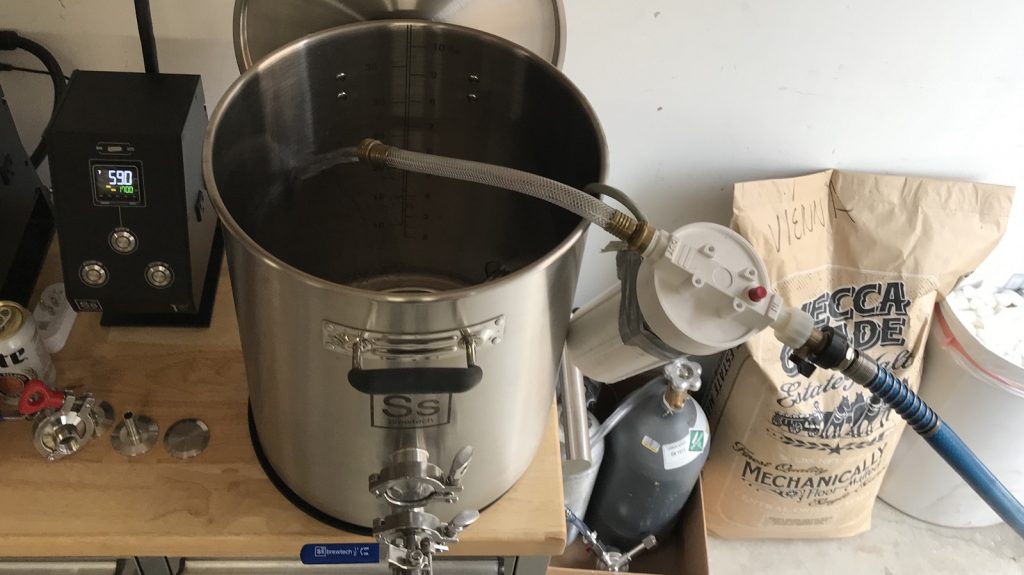
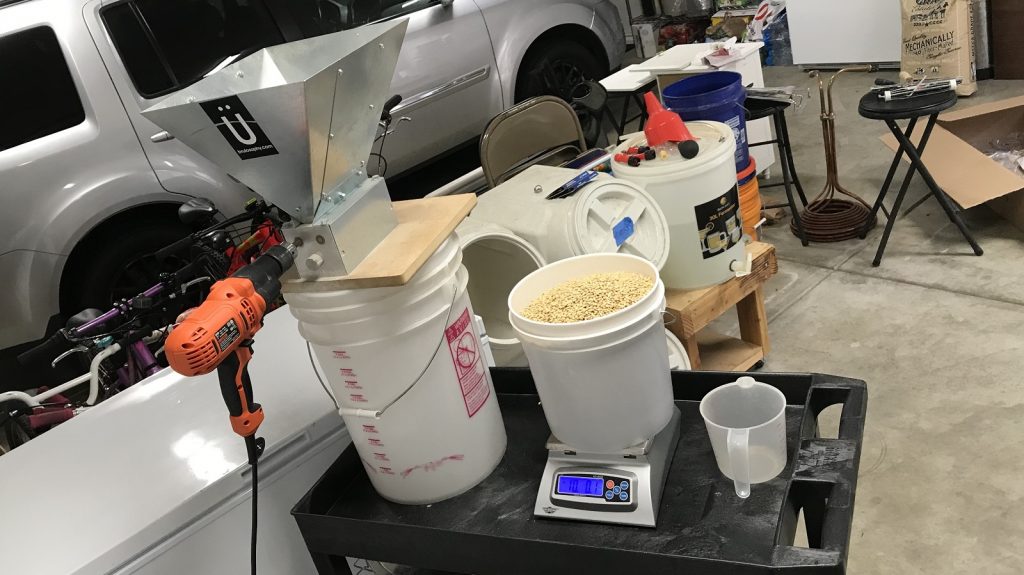
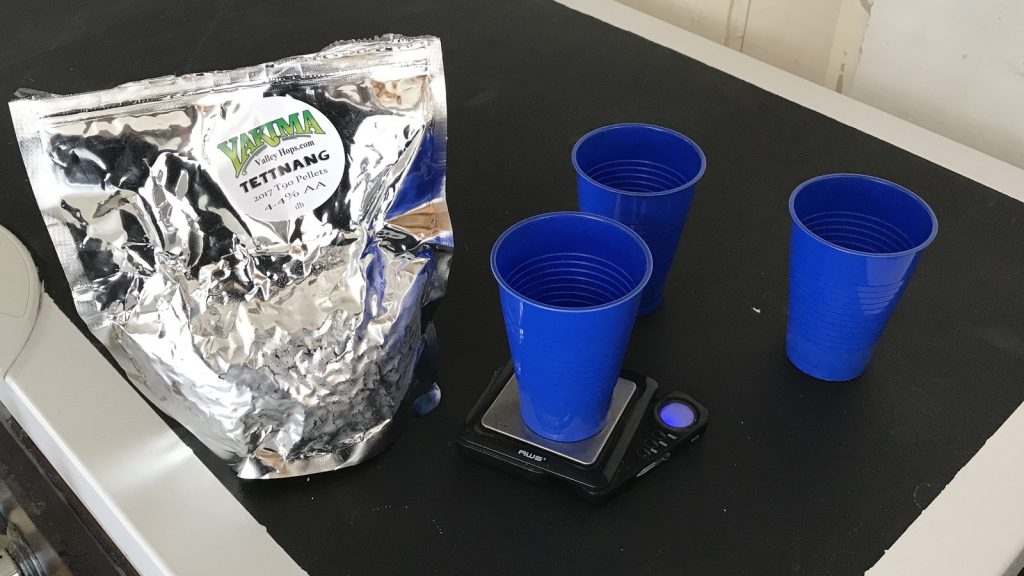
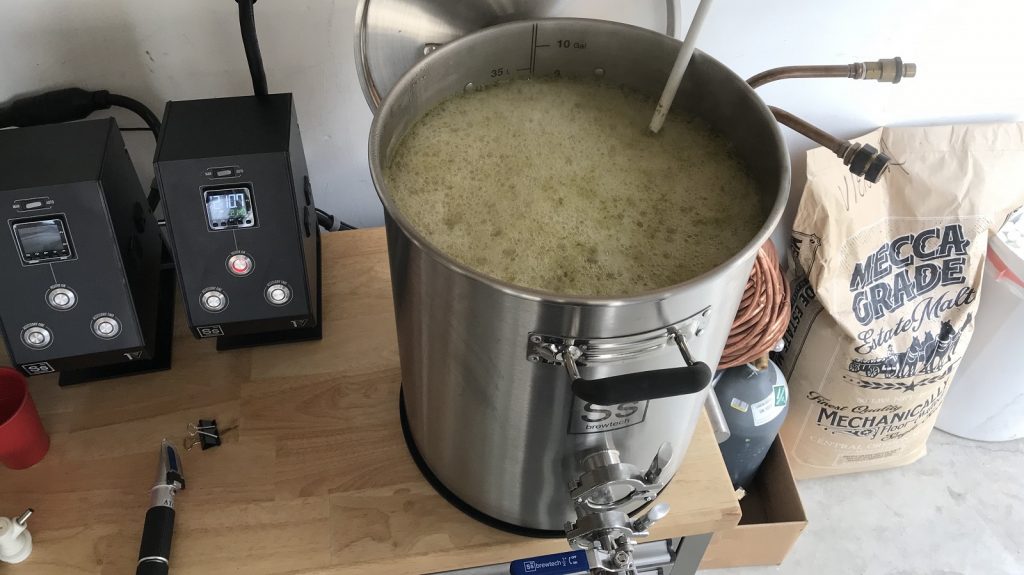
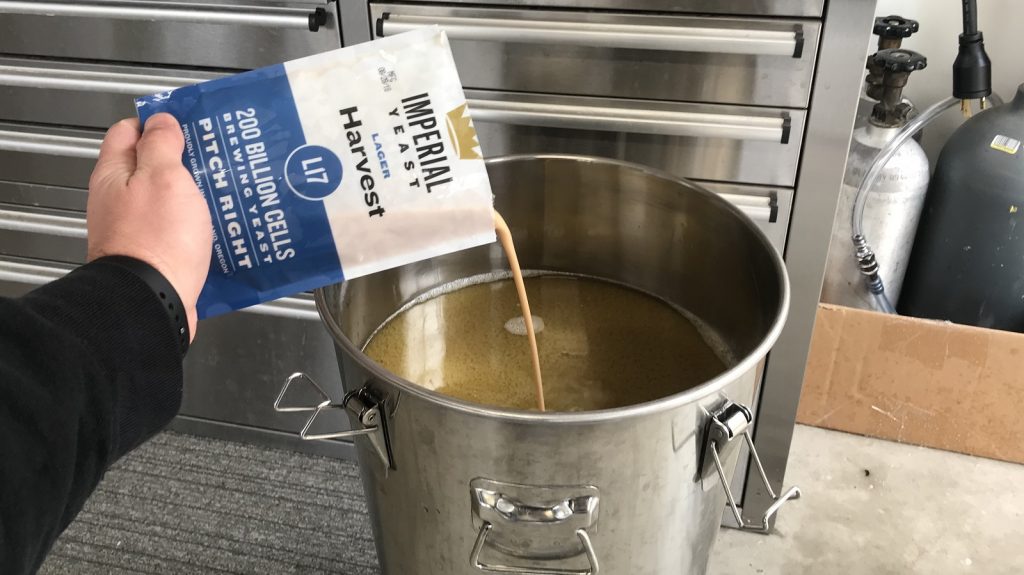
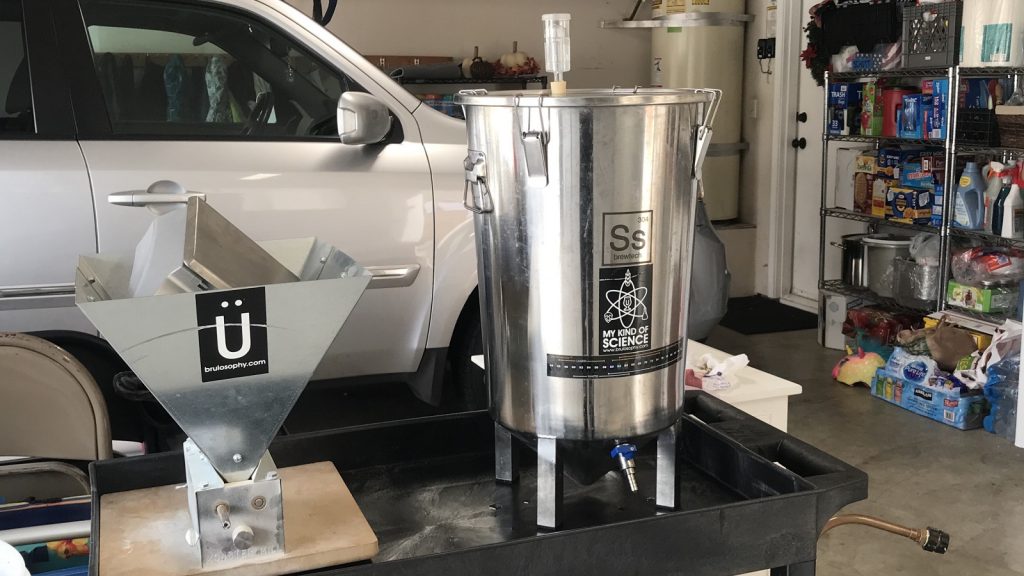
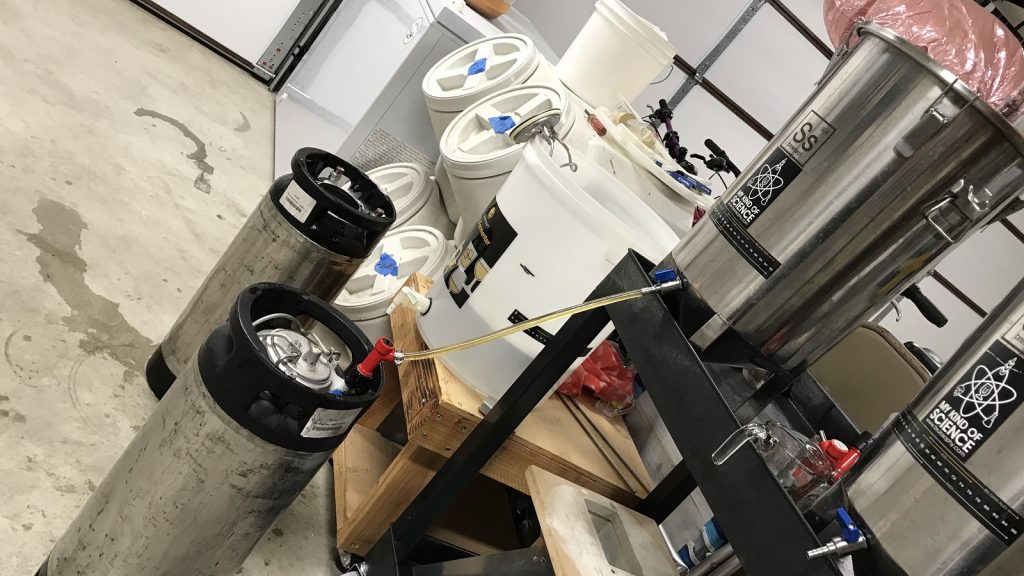
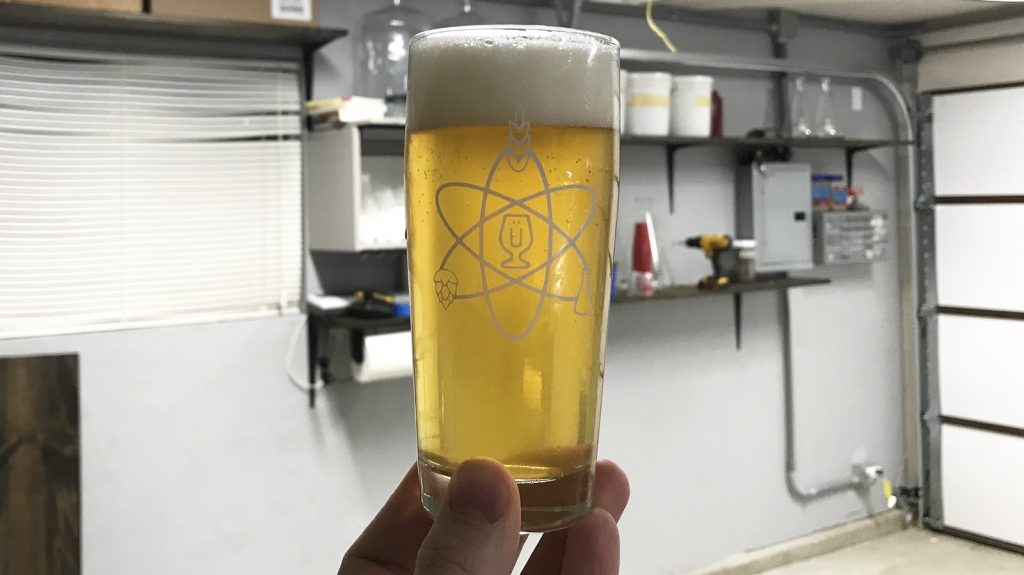
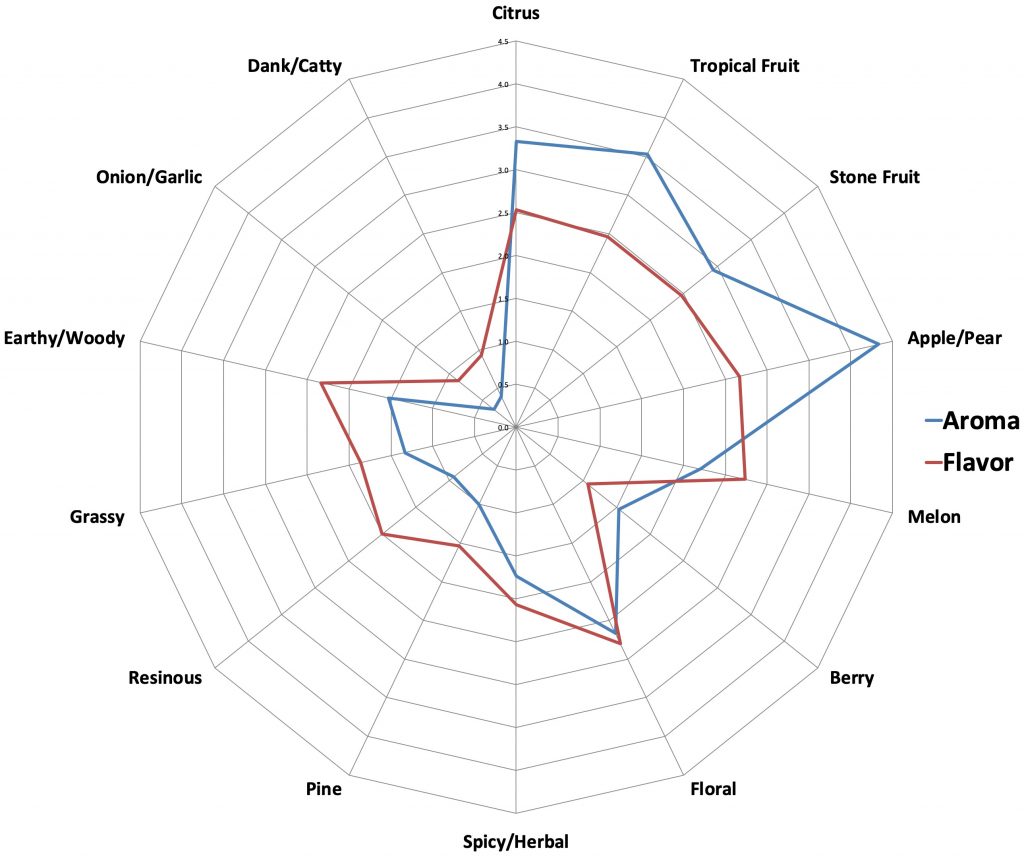
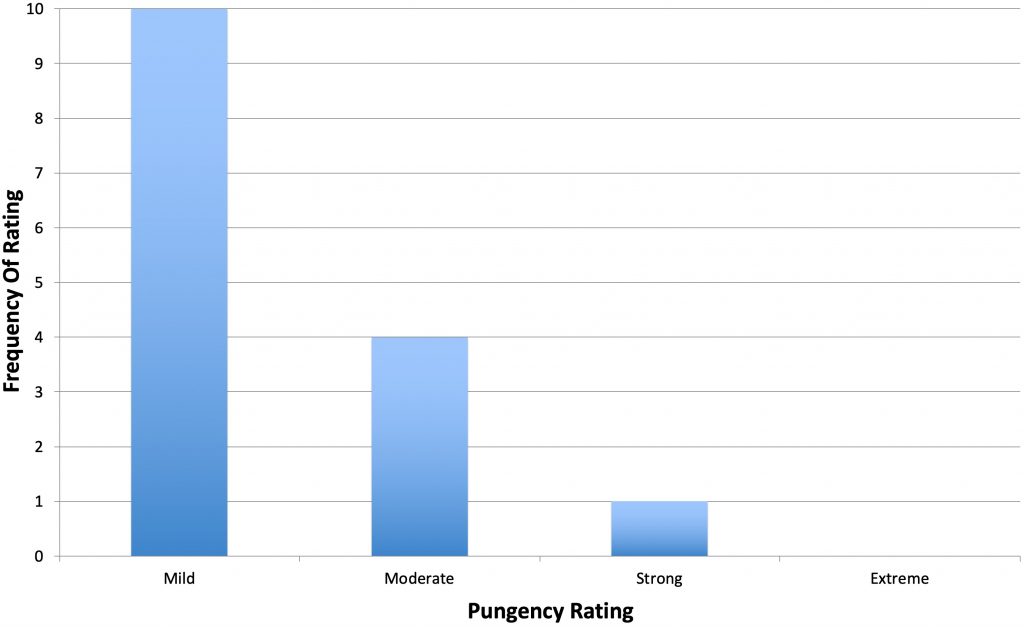
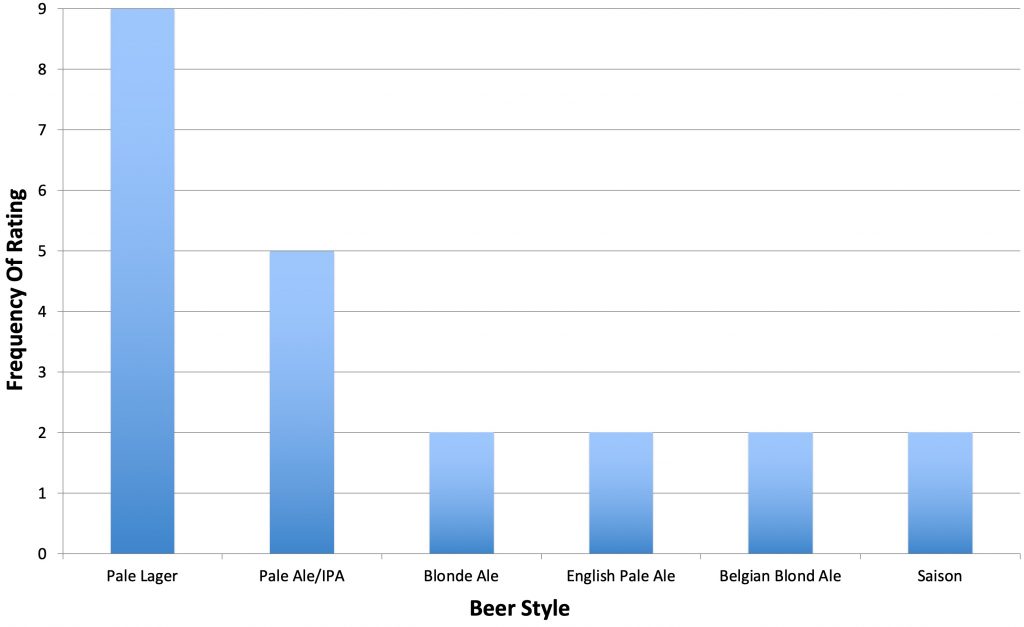
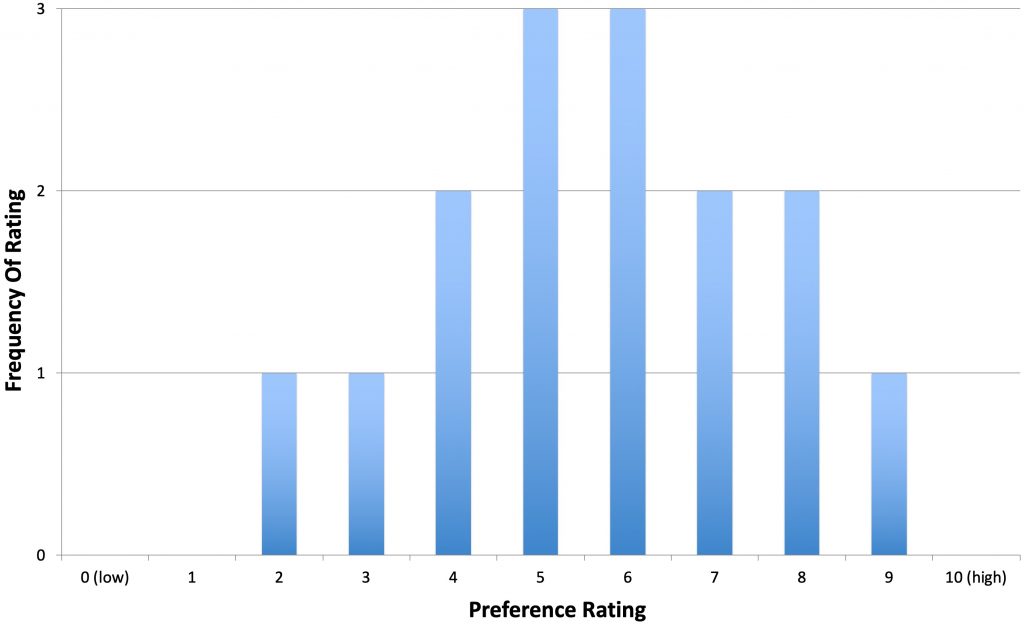











17 thoughts on “The Hop Chronicles | German Tettnanger (2017) Pale Ale”
Did I read the timeline correctly? Was this beer served a mere 16 days after it went in the fermenter? Not a lot of lagering for this lager! Perhaps the strong apple aroma/flavor was because the beer was served too green?
One issue with pairing apple and pear is that, when it’s noted, there’s no way to decipher whether it was apple or pear. In this case, the tasters who noted that character were pretty clear about perceiving a slight pear flavor, and while the radar graph makes it appear much stronger, it was only 0.5 points higher than the next strongest descriptor. Also, it wasn’t noted as being necessarily unpleasant by anyone, and it certainly didn’t taste like the acetaldehyde I’ve used to dose beers.
Someone on Reddit mentioned they get a similar character when using “craft malt,” which makes me wonder if perhaps that’s not what’s going on. Still, I’ve used Tettnanger a ton and have always gotten a unique pear-like character from it, though usually very subtle and backing up the floral/herbal notes.
Yay! Glad to see some props for old-school hops.
I’m actually getting fatigued of Citra IPAs and the ‘stone fruit’ varietals going into everything. Tettnang is delicious and I’m going back to the well to Kent Golding and Fuggle more and more. That said, I have liked the experimental hop ADHA-484 for similar flavor profile reasons. That works magically well in a SMASH brown ale.
Indeed it is fun to experiment with new hop varietals, but I love my Tetts, Hallertau, Saaz, Fuggles, etc. Brew a really nice, traditional IPA with Fuggles, and most folks are pleasantly surprised at the what the style really has to offer.
Props to Brulosophy for doing a chronicle on this one!
This one got me in the mood to brew a nice crisp lager with some good ol’ noble hops. Haven’t had one on tap for some time, and the ambient temp in my garage is perfect right now, what with my chamber being on the blink.
I’ve recently begun to use Tettnanger as my go to hop for many continental styles, including the Helles Lager that I’m sipping on right now. This Helles also has the slight pear flavor, but not so much in the aroma. It’s relatively young, brewed a mere 19 days ago and has only been cold conditioning for 5. I didn’t use any craft grains as mentioned in a previous post. Maybe it’s the simply the hops, or maybe it will fade as it ages. I guess time will tell.
I stopped into my LHBS today to pick up a few ingredients for a double brew day tomorrow. As I was looking through the Noble Hop selection, the owner points out that a new Local Hop Supplier offered Super Tettananger. Has a really high Alpha Acid, around 20%.. Is that something you have seen, tried or is even offered on the west coast?
Never heard of it. Interesting.
If you want to give it a run, let me know and Ill send you a few ounces.
I wonder if that isn’t Polaris. A high alpha German hop. It’s kinda noble-ish, although I’ve only used it for early buttering additions.
Maybe a Relative… This is grown on a very small hop farm. Prairie Ronde Hops in Schoolcraft, Michigan. It has a Hop ID of MI515 from USA HOPS . I wasn’t able to locate any other info on line.. Hop Packet says Super Tettnanger Dual Purpose Hop Alpha 21.0% Beta 5.53%
Are you sure your hops were from Germany ? The picture of the bag shows no country of origin.
Yeah, I double checked my order slip.
I love Tettnanger hops. My favorite Pilsners are the spicy herbal ones featuring this hop.
But I think this test shows what I’ve been suspecting for a while and why I actively don’t care for some American Pilsners focusing on Tettnanger or Saaz (which I understand are genetically identical).
In low to moderate amounts I find the Tettnanger hops yield a great spicy herbal and floral quality.
But when a beer is loaded down with them I can only taste a bright tangy fruitiness. I see Pear, Tropical Fruit, and Citrus are the top 3 aromas and that seems fairly representative on all that I can taste from Pilsners loaded down with this hop.
On my palate these often overwhelm the light malts these brewers use.
This is a great write up and great series, thanks a lot.
For those who are interested in comparing hops, it might be worthwhile adding tags to this page to make sorting a little easier:
https://brulosophy.com/projects/hop-chronicles/
For instance, add a column for national origin, or maybe a brief descriptor under the name of each hop — it’s hard to know whether it’s worth comparing “Experimental #07270” to, say, Eukanot without a little more info on that page.
This maybe sounds a little too critical, but it’s just a suggestion. This is a great resource and thanks again.
The flavor/aroma graph looks like Texas! Maybe with a little less apple/pear.
Funny, I had the same thought and wondered what it would take to get the profile to look even closer to Texas’ outline.